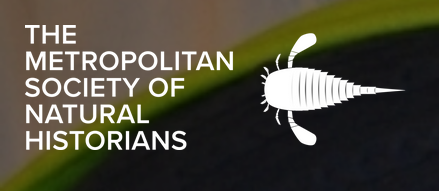On a sunny Saturday, September 17, twenty-three natural historians joined Dr. Harald Parzer in Central Park to learn about insects. Parzer showed participants how to identify members of this astonishingly species-rich group of arthropods: three body parts (head, thorax, and abdomen) with three pairs of legs on the thorax. After this introduction, basic sampling techniques were presented, including the well-known butterfly nets, but also more obscure techniques, such as inhaling them with an aspirator or luring them into pitfall traps. A student insect collection demonstrated how insects are preserved and the importance of properly labeling collected specimens. At Shakespeare’s Garden, butterfly nets were provided so that attendees could practice their newly learned insect catching skills. The insects frequently outwit participants, but attendees were still able to catch and observe plenty of insects. One tagged male monarch butterfly was spotted feeding in the garden. There were also plenty of white cabbage butterflies (Piers rapae), which could be easily sexed using the number of black dots on the front wings. Other insects observed include skippers (Hesperidae, with the jet-like rested wings), giant carpenter bees (Xylocarp sp.), leaf beetles (Chrysomelidae), honey bees (Apis mellifera), yellow jackets (Vespula sp.), and the ubiquitous hoverflies (Syrphidae), some of which mimic wasps with their yellow-black abdomen. After talking about the importance of having native wildflowers for pollinators, Parzer discussed some of the extraordinary monarch butterfly (Danaus plexippus) biology and the dramatic decline of overwintering individuals in Mexico. We finally moved to another site, observing large milkweed bugs (Oncopeltus fasciatus) on a native milkweed stand planted by Central Park parks department.
If you have any questions related to this event, you can email Dr. Parzer directly at hparzer@outlook.com.
To view more photos from this event, check out our gallery. Photo credit to Maurice Chen.
For more resources on insects:
A wonderful book with many pictures of insects found on the East coast: Insects: Their Natural History and Diversity: With a Photographic Guide to Insects of Eastern North America.
A great book, and at times funny too, on the evolution of insects: Evolution of the Insects.
Butterfly guide: Kaufman Field Guide to Butterflies of North America.
Good source for insect collecting equipment: BioQuip.
Online resource to identify insects and other arthropods (with help from specialists): BugGuide.
More on the monarch butterfly: Monarch Watch.

